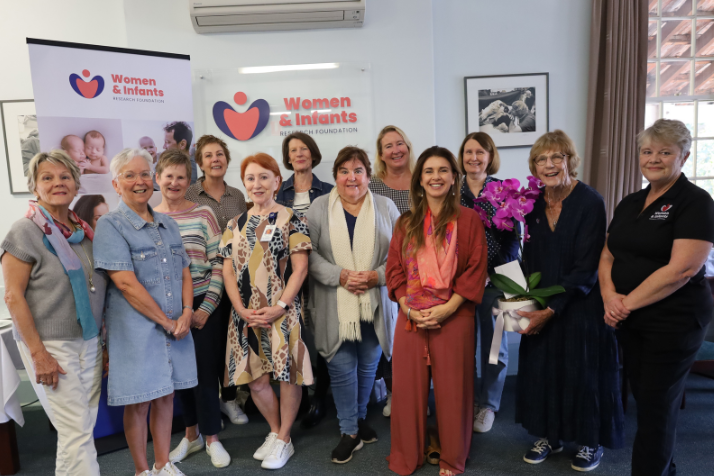A new study examining the link between a woman’s bacterial signature and preterm birth is being heralded as a major breakthrough in pregnancy care.
Published in the leading medical publication, The American Journal of Obstetrics & Gynecology (AJOG), the world-first Predict1000 Study has identified a vaginal bacterial DNA signature that identifies pregnant women who are at increased risk of preterm birth.
Complications associated with preterm birth are the leading cause of death and disability among children under five years of age in the developed world. According to World Health Organization data, more than 15 million babies were born preterm in 2015. In Australia alone, more than 26,000 babies are born
preterm each year.
Lead investigator and UWA Senior Research Fellow with the Women & Infants Research Foundation (WIRF), Dr Matt Payne said that despite numerous studies finding associations between vaginal bacteria and preterm birth, previous antibiotic interventions had been met with limited success.
“This has been largely due to a lack of appropriate diagnostic tests which are capable of identifying high risk women who would benefit most from such interventions,’’ Dr Payne said.
“It has been clear for some time that approximately 25 per cent of preterm births are caused by bacterial infection, the vast majority of which originate in the vagina. However, at present the diagnostic tests available to pregnant women to assess their level of risk are limited.”
The study team sought to develop an algorithm based on the presence and/or absence of specific vaginal bacteria, and in some cases, the amount of bacteria present, to attempt to predict a woman’s risk of preterm birth.
1000 women with singleton pregnancies from King Edward Memorial Hospital in Perth were recruited for the study and asked to provide vaginal swabs between 12-23 weeks’ gestation.
The final algorithm, now called the ‘GLU’ test, has identified a vaginal bacterial DNA signature that identifies women with a singleton pregnancy, without symptoms or other risk factors, who are at increased risk of spontaneous preterm birth and may benefit from targeted antimicrobial therapy.
“This study has shown that GLU-positive women are at increased risk of preterm birth. Utilising the GLU test to identify such women, it may be possible to reduce this risk through a simple antibiotic and probiotic treatment program in mid-pregnancy.
“We are currently in the process of conducting a large randomised clinical trial to assess this in Perth at present,” Dr Payne said.
Director of WIRF’s Laboratories and Head of UWA’s School of Biomedical Sciences, Professor Jeff Keelan, said: “We have known for some time that specific bacteria can infect the womb and cause preterm labour, but the bacteria are common and in most pregnancies are not harmful.”
“Now we have shown that it is the combination of harmful and protective bacteria that predicts risk, and this can now be tested.”
WIRF Chief Scientific Director and Head of UWA School of Obstetrics and Gynaecology, Professor John Newnham AM said the findings from the Predict1000 Study would significantly bolster the WIRF-led coordinated national effort underway to safely lower the rates of early birth.
“Under the auspices of the Australian Preterm Birth Prevention Alliance, we are working in each Australian state and territory to lower rates of preterm birth using the key interventions developed as part of our pioneering Western Australian program,” Prof Newnham said.
“By identifying prevention strategies that are effective and feasible for each health care system, and assisting with their implementation, we are seeing some truly impressive results.”
Most recently the Alliance’s ACT contingent reported a 10 per cent reduction in the rate of early birth at the Centenary Hospital for Women and Children.
“By incorporating the knowledge from Predict1000, and integrating the GLU test, we hope to amplify the impact we are already seeing across the country and continue to safely prevent preterm birth and its far reaching impacts.”
This work has been supported by the National Health and Medical Research Council, the Women & Infants Research Foundation and Channel 7 Telethon Trust.
The paper, A Specific Bacterial DNA Signature in the Vagina of Australian Women in Mid-Pregnancy Predicts High Risk of Spontaneous Preterm Birth (The Predict1000 Study)’ has been published online in The American Journal of Obstetrics & Gynecology and can be viewed here.


